Religion and Culture of Nendor
Religion and Culture of Nendor
The world was created by the seven gods and goddesses of Nendor. Siblings, they are in order of age:
Honorus – Lord of the gods; Lenore – Goddess of the earth; Neldin – Lord of the underworld; Arritisa – Lady of the ocean; Khron – God of war; Seritia – Goddess of love; and Falcron – God of wisdom. Each deity has it’s own temples, clerics, and followers. Although there is no prohibition against following more than one, most people choose a specific god or goddess to primarily worship. Of course prayers are offered to different gods or goddesses depending on the need, no matter who a person follows.
The seven gods worked together to create the world and it’s inhabitants. Neldin, however, chafed under his brother Honorus’s rule and plotted to over throw his brother and rule in Honorus’s stead. A fierce and bloody war was fought which ended with Neldin’s defeat. The Six declared Neldin the God of Evil, razed his temples all across Nendor and forbade any to worship him. In the aftermath of the war, Neldin’s few remaining followers hid their devotion to avoid persecution and death from those affected by the war. Within a generation, the world believed worship to Neldin as an organized religion had disappeared. But his followers survived and created an underground hierarchy, planning for their god’s revival.
Certain kingdoms are associated more closely with one or the other. Yar-del – because of Kel’s close association with Honorus, worships Honorus. Endor, founded by a priest of Falcron, are devotees of the God of wisdom. Khron is beloved by the dwarves. Despite this, no kingdom – with one exception that won’t be discussed until Book Two – is permitted to have an official state religion. Priests and Priestesses rarely marry, though it is not prohibited. Service to one’s god or goddess requires complete devotion, something generally not conducive to having a life partner. For example, when Falcron had his priest Endis found the kingdom of Endor, he had Endis leave the priesthood. Of course, being a king would make being a cleric difficult in itself, but that is a debate for another time.
Every kingdom or city state has it’s own high priest and priestess for each of the six temples. Each of the temples also has one high prelate who headed the order world wide. One temple for each of the six has been designated as the home of their order.
Same sex pairing are generally accepted, though for the ruling class, it is not preferred for obvious reasons. On Nendor couples are not married at a wedding. Instead, they are joined at a union ceremony, typically at the Winter or Summer Festivals. Spouses typically do not refer to themselves as husband and wife. Life partner is the preferred term to indicate the person to whom you are joined. Newlyjoineds are encouraged to take time away to celebrate their union ceremony, but it is not a requirement.
Humans are the dominate race on Nendor, but they share the world with other cultures. There are three dwarf realms, one on each major continent. In addition, Honorus and Lenore each created guardians to protect lesser creatures from men and dwarves. Peregrines are horse sized raptors tasked by Honorus with monitoring the world from above. Unicorns are special to Lenore and safe guard her creatures on the ground. Arritisa has her own guardians, but we won’t see and learn about them until Book Two. Immortal, Peregrines and Unicorns both possessed powerful mental abilities. In addition to being able to communicate with all of lesser creatures, they can speak mind to mind with humans and dwarves.
To assist their guardians, Honorus and Lenore also created the Muchari – caretakers who looked human but are not. Muchari have extremely long lives, are physically faster and stronger than humans, but are otherwise indistinguishable from the men and woman they resemble.
Magic plays a major role in the daily lives of nearly everyone on Nendor. There are several classes of wizards, each determined by the power of the individual mage. Grand master is the highest level, followed by master wizards, wizard class, journeyman and novice. Although there are different levels among the classes, there are no intermediate ranks. Thus, someone might be a strong master wizard, but she is still considered a master wizard, the same as a low level master. Status is not derived by training, only by the strength of ones gift. An adept master wizard who has studied and practiced hard, can in theory defeated an untrained or lazy grand master wizard. All things being equal, however, a grand master wizard is the pinnacle of his or her discipline.
Energy or power used to perform magic is collected and stored for future use. Every living thing gives off energy that can be used for magic. Wizards use their talent to retain all their unused power and store it against future needs. Non-wizards typically leave behind some of their unused power everywhere they go. This cast of power is minute in itself, but wizards collect these small ergs and join them with what they take from themselves. If a wizard doesn’t perform any strong magic, they can easily accumulated a sizable store of power for future use.
Realizing that near unlimited power would be an asset to his kingdom, Kel created a new way to store and distribute magic. He called this new creation a Source. Unlike like other storage vessels, a Source has near limitless capacity. In thirty centuries, the one Kel created for Yar-del never came close to reaching capacity. Another advantage is that unlike personal storage containers, a Source allows multiple users access. Having a central store of great power gave the kings and queens of Yar-del an advantage they used to help their kingdom prosper and grow.
There are two forms of magic that bear mentioning. High magic, refers to difficult spells or acts that generally only a grand master wizard can perform. But because magic has a similar effect on the user that physical exercise does, high magic is extremely taxing on the wizard.
Dark or black magic is forbidden by any who worship the Six. Dark magic comes from the source of the energy and not the spell or magic performed. There are several methods that fall under the umbrella of dark magic; sucking energy from a weaker, injured, or dying opponent against their will; taking power from non wizards without consent; binding the living to one’s will and siphoning off power without consent. Because it is taken without permission, the energy became twisted in ways that change the texture and become addictive to the wizard. When used to perform magic, other wizards can feel the difference and instantly know the user has collected and is using dark magic.
Healers are similar to wizards in that they needed to have a gift in order to heal. As with wizards, some gifts are stronger than others. Energy is also needed to use healing powers. Typically a healer will use the power from the patient when healing, but for greater injuries or illnesses, the patient might not have enough energy to spare. In those instances, the healer could draw from within herself or take from other non-healers who volunteer. Like wizardry, healing can be draining to the user.



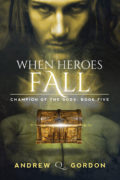
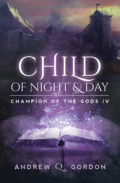
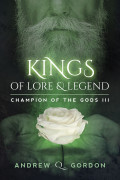
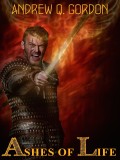
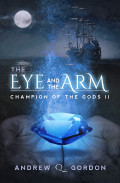
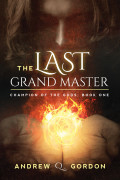

Wow. Sounds like a fascinating world.
Thanks and thanks for stopping by.
Wow, this is amazing! Such detail, and the map — professional! Great job, really impressive!
Thanks – though I can’t take credit for the quality of the map. Gus turned my idea into something great.
This is fascinating.
Thanks Jana
I should have found this before reading the book:P
Note sure how I could have done more to advertise it, I made it a status update every day as I posted it